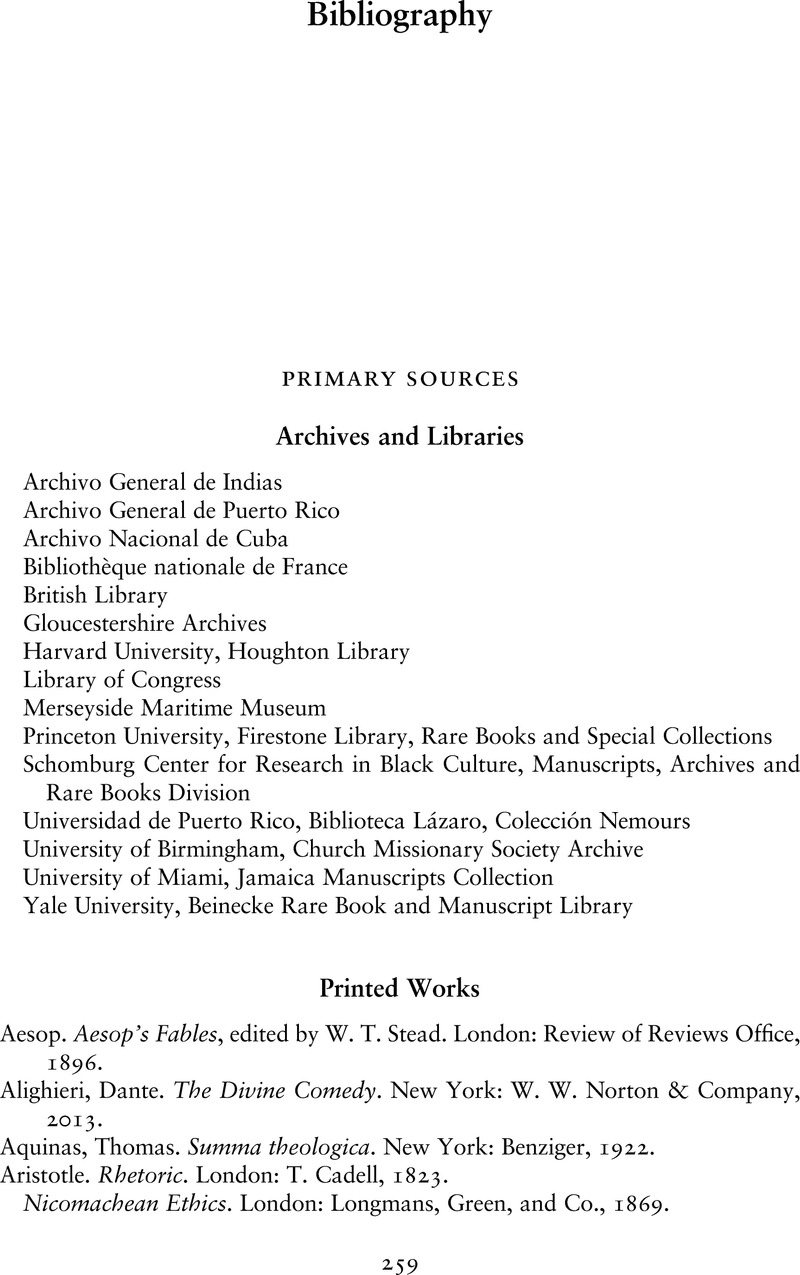Book contents
- She Is Weeping
- She Is Weeping
- Copyright page
- Contents
- Acknowledgments
- 1 The Emotional Foundations of Racialized Slavery
- 2 Scientific Racism and Emotional Difference
- 3 Atlantic Slavery and Its Passionate Transgressions
- 4 The “Abolition” of an Economic Apparatus of Feelings
- 5 The Racialization of Emotions in Contemporary Slavery
- Bibliography
- Index
- References
Bibliography
Published online by Cambridge University Press: 03 November 2021
- She Is Weeping
- She Is Weeping
- Copyright page
- Contents
- Acknowledgments
- 1 The Emotional Foundations of Racialized Slavery
- 2 Scientific Racism and Emotional Difference
- 3 Atlantic Slavery and Its Passionate Transgressions
- 4 The “Abolition” of an Economic Apparatus of Feelings
- 5 The Racialization of Emotions in Contemporary Slavery
- Bibliography
- Index
- References
Summary

- Type
- Chapter
- Information
- She Is WeepingAn Intellectual History of Racialized Slavery and Emotions in the Atlantic World, pp. 259 - 276Publisher: Cambridge University PressPrint publication year: 2021



